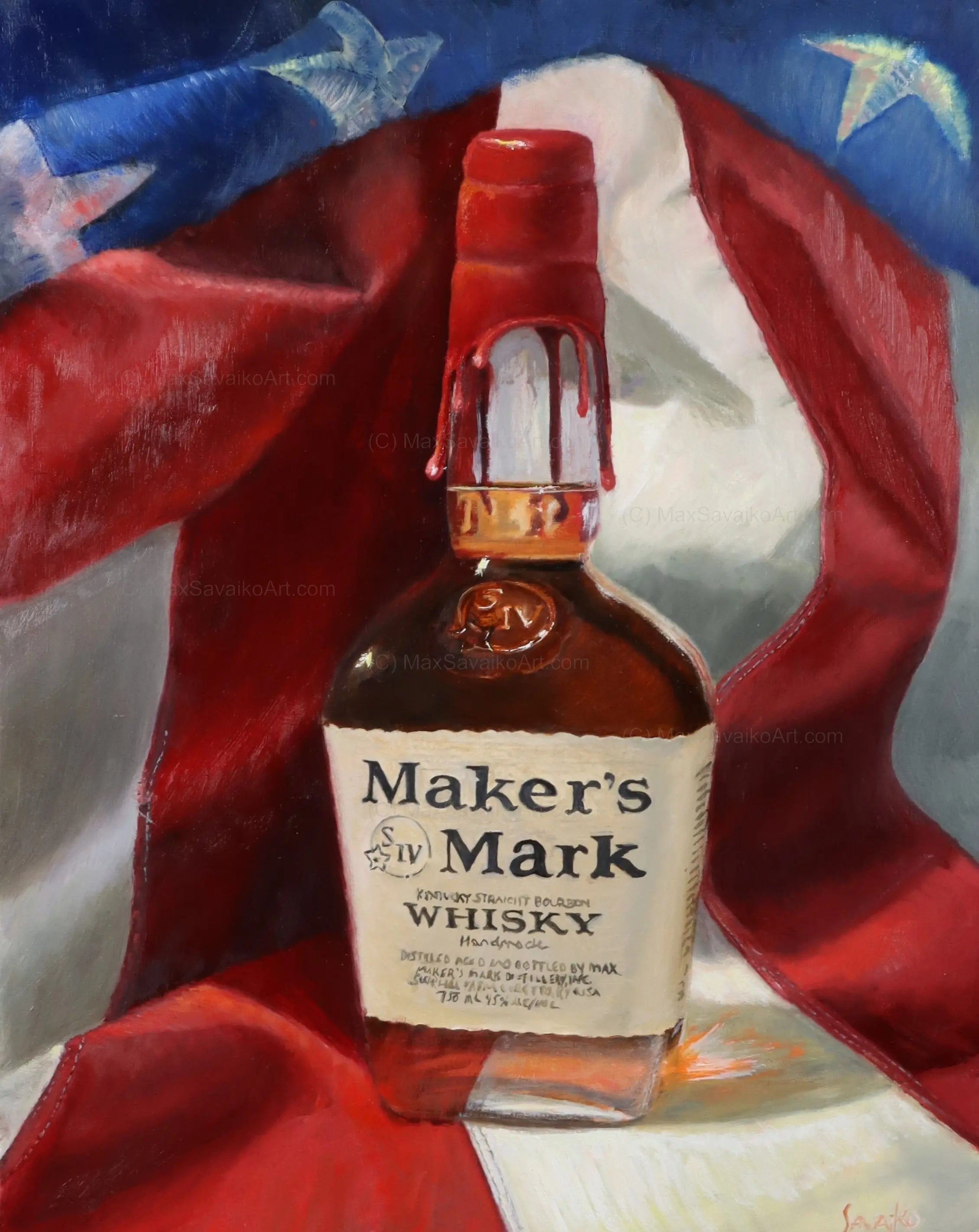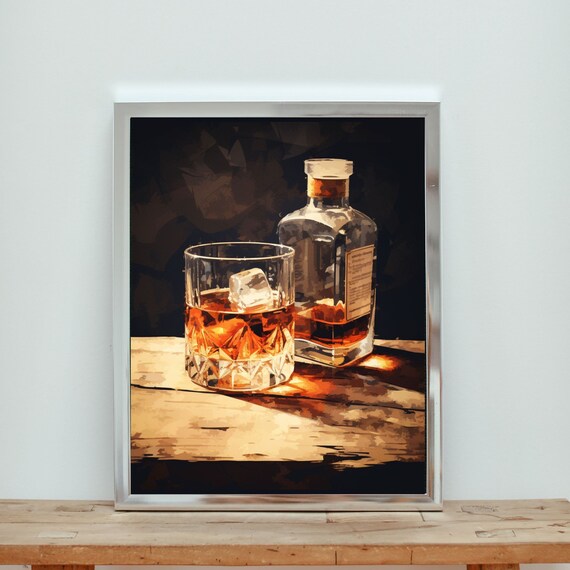Limited Edition Bourbon Art: Why Collectors Are Flocking to Distinct Finds
Limited Edition Bourbon Art: Why Collectors Are Flocking to Distinct Finds
Blog Article
The Value of Whiskey Art in Celebrating Heritage and Workmanship in the Beverage Sector
The complex connection in between bourbon art and the event of heritage and craftsmanship within the beverage industry can not be overstated. Via attentively developed labels and containers, whiskey brand names encapsulate their historic origins and the artisanal skills that define their manufacturing methods.
The Historic Origins of Whiskey
At the heart of whiskey's allure lies an abundant tapestry of historical roots that map back to old civilizations. The beginnings of whiskey can be linked to the purification techniques of the Sumerians and Babylonians around 2000 BCE, where early forms of fermented grain drinks began to emerge. It was in the Center Ages that the art of distillation developed substantially, specifically in Ireland and Scotland, leading to the development of scotch as we understand it today.
The term "bourbon" itself originates from the Gaelic word "uisce beatha," implying "water of life." This expression highlights the social importance of whiskey in Celtic cultures, where it was typically connected with routines, celebrations, and communal bonding. By the 15th century, purification came to be an identified craft within reclusive areas, leading the way for the facility of legal distilleries.
As profession courses increased, scotch's popularity expanded, transcending local boundaries and capturing the interest of connoisseurs worldwide. Realism Art. This historic journey reflects not only the craftsmanship behind whiskey manufacturing however additionally its essential role in cultural and social contexts, noting it as a considerable beverage throughout history
Artistic Expression in Branding
Whiskey branding stands as a compelling crossway of creativity and commerce, where visual identity plays an essential role fit consumer perception. The looks of scotch labels, packaging, and marketing products mirror not just the brand's tale yet likewise its core values and heritage. Through artistic expression, distilleries share a story that resonates with consumers, stimulating feelings and stimulating connections.
Making use of shade, typography, and imagery in branding offers to separate products in a saturated market. Typical themes might evoke a feeling of authenticity and workmanship, while modern layouts can signify technology and forward-thinking. This tactical imaginative direction boosts brand acknowledgment and loyalty, permitting customers to build a personal partnership with the bourbon they pick.
In addition, creative expression in branding frequently acts as an event of local heritage. Distilleries often include local signs or historic references into their layouts, creating a local color that invites consumers to take part in a broader cultural experience. Eventually, the creativity behind scotch branding not only improves visual appeal but likewise enhances the total narrative of the brand, promoting a much deeper admiration for the craftsmanship and heritage embedded in each bottle.
Craftsmanship in Container Layout
The virtuosity evident in whiskey branding prolongs beyond visual identity to include the workmanship associated with container layout. Each container functions as a vessel not just for the spirit within, but also for the story it tells about its tradition, quality, and origin. The style process needs precise attention to detail, as elements such as closure, material, and form add dramatically to the total assumption of the scotch.
Craftsmanship in bottle layout entails choosing top notch glass that can improve the whiskey's shade and quality, while likewise offering a responsive experience for the customer. The silhouette of the bottle have to be both cosmetically attractive and functional, commonly showing the heritage of the brand. Lots of distilleries select unique forms or embossed logo designs that stimulate a sense of credibility and history.
In addition, the tag design and typography play a crucial duty in communicating the brand name's narrative. Realism Art. A well-crafted bottle not just captivates the customer's eye but additionally strengthens the brand name's commitment to top quality and custom. By doing this, the craftsmanship of container style comes to be an important facet of the scotch experience, combining artistry with an extensive respect for heritage
Cultural Value of Scotch Art
Commemorating tradition and workmanship, the social importance of whiskey art transcends simple visual appeals, linking with the social and historical stories of the areas from which it comes from. Each container acts as a canvas, illustrating the unique stories, mythology, and practices that have shaped regional whiskey-making techniques. The elaborate styles usually reflect the heritage of the distillers, integrating icons and motifs dig this that resonate with the culture and values of their areas.

On top of that, bourbon art plays a crucial duty in common celebrations and celebrations, working as a tangible web link in between people and their shared experiences. By valuing the artistry in scotch product packaging, consumers grow a deeper understanding and respect for the craft, inevitably enriching their pleasure of the drink itself.
Modern Trends in Whiskey Presentation
In the last few years, the presentation of scotch has actually evolved to show modern preferences and trends while still honoring standard workmanship - Whiskey Art. Distilleries are significantly concentrating on aesthetic aspects that improve the total alcohol consumption experience, bridging the space between heritage and modernity
Cutting-edge container designs have emerged, typically including lasting products and artistic labels that tell compelling stories. Lots of brand names currently team up with neighborhood artists, infusing their products with distinct visual expressions that resonate with consumers. In addition, limited-edition launches are often packaged in collectible containers, adding value and appeal for lovers.

Conclusion
In verdict, bourbon art offers as a crucial avenue for sharing the heritage and workmanship intrinsic in the drink sector. Through elaborate branding, innovative container designs, and culturally considerable artistic components, bourbon brands properly recognize their customs and attach with customers.


Workmanship in container style involves selecting high-quality glass that can boost the bourbon's color and clarity, while additionally giving you can try this out a responsive experience for the consumer. In this means, the workmanship of bottle design comes to be a crucial aspect of the whiskey experience, combining creativity with a profound regard for heritage.
In conclusion, bourbon art offers as an important avenue for revealing the heritage and craftsmanship inherent in the drink industry.
Report this page